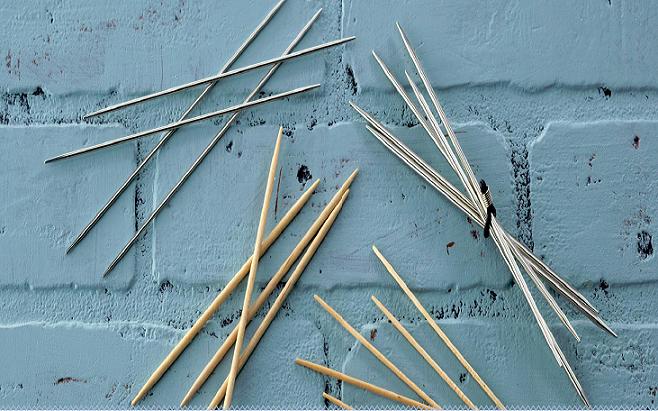
Needle Selection

There’s a movement afoot (pun intended) among certain sock knitters to let double-pointed needles become extinct. Sock designers have published instructions for knitting socks with two circular needles, with one circular needle, and even for knitting two socks at once with one long circular needle. No slight intended to these ideas, but I prefer double-pointed needles, in either longer 8"–10" (20cm–25cm) lengths or shorter 4"–6" (10cm–15cm) lengths.
Some double-pointed needles come in sets of four, some in sets of five. Depending on the stitch used, pattern or knitter’s preference, the stitches may be divided onto either three or four needles with the fourth or fifth needle working the stitches. Although most of the patterns in this book are worked on five needles, at times the stitch multiple of a pattern, such as in the Traveling Stitch Socks, lends itself to four needles.
Needles come in a variety of materials, including various types of wood, bamboo, plastic and metal. Choosing one over the other is largely a matter of what feels best in your hands, but this choice can also be dependent on the fiber you’re using. In general, wooden needles add a slight bit of friction to the knitting, so the stitches are less likely to inadvertently slip off the needles. This can be an advantage for the beginner or for any knitter working with a particularly slippery yarn. Metal needles are slick, allowing for smoother knitting of coarser fibers such as wool and mohair, as well as really speedy knitting with those slippery yarns. There is no right or wrong choice here—four or five, long or short, wood or metal—it’s really a matter of personal preference.